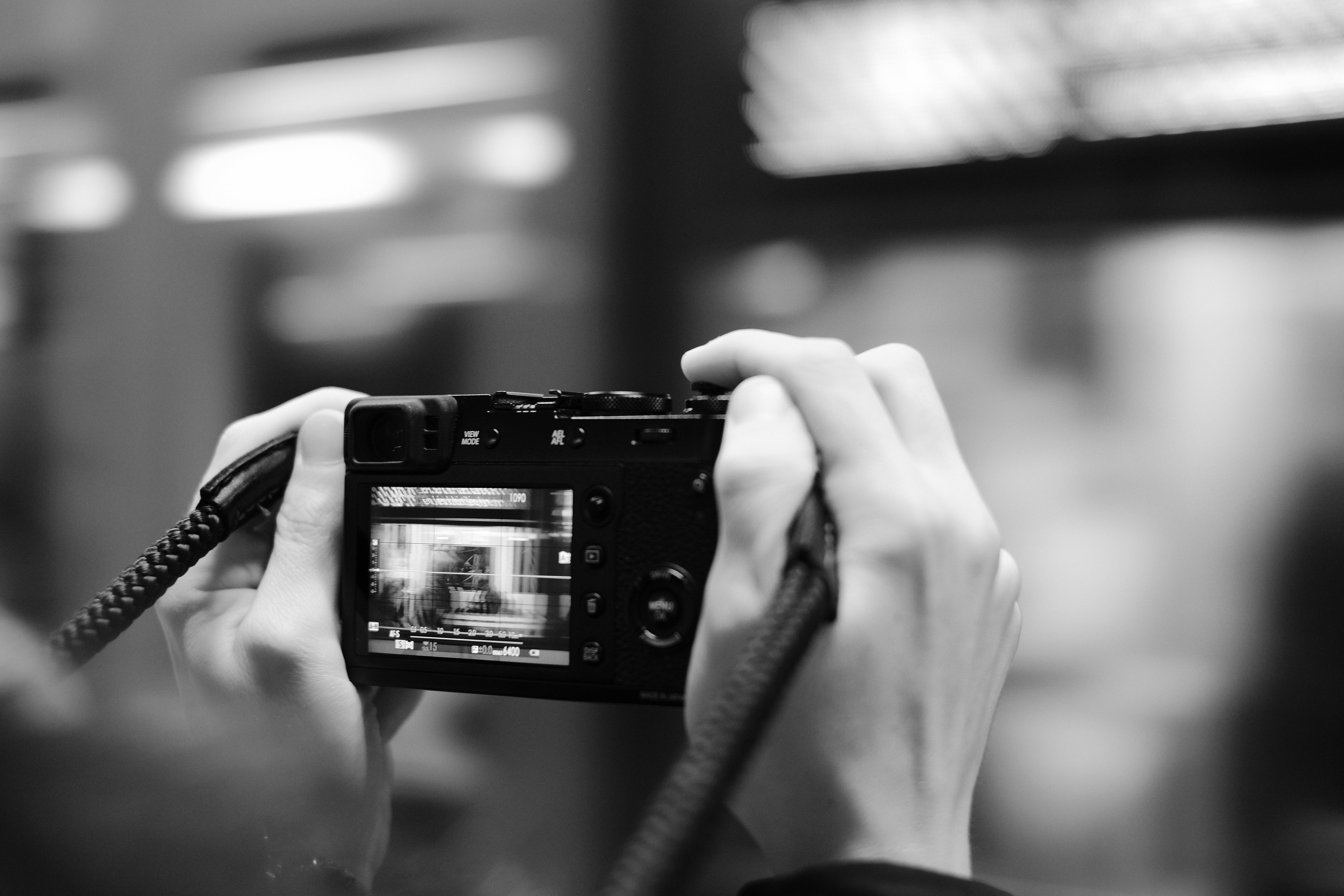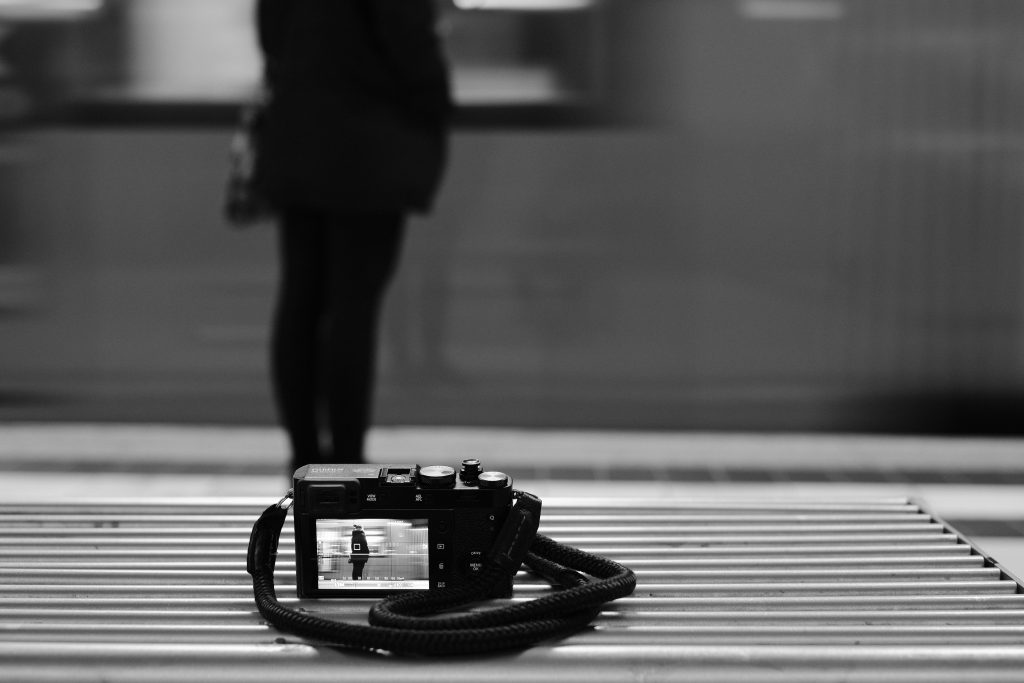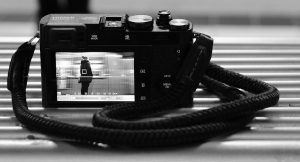
Introduction
I’ve already written a how-to on setting up the Fuji X100T for street photography. Generally, the settings I talk about there also apply to the X100F. However, Fuji has changed the menu layout and adapted it to its bigger brothers X-Pro2 and X-T2.
In February 2017, Fuji released the X100F, successor of the beloved X100T. It’s a camera, many street photographers have been waiting for. Its retro style and discreteness are features that are well appreciated by street photographers around the world. I will show you how I set up the X100F for my style of street photography. I will explain all the settings I made and why I made them. If you have any technical questions on the X100F, drop me a line.
In the following list, I will only show settings that differ from the factory settings of the camera. I will first give you the path on how to find a setting and then a short (or long :)) description on why I use it that way.
Basic Settings
IQ > RAW RECORDING > LOSSLESS COMPRESSED
I prefer RAW, because I want to get the best out of my photos. Even though JPEG engines have become better and better over the years, I want to be able to crank up the shadows sometimes. For the RAW itself, I prefer the compressed mode. It takes up less disk space and is lossless (!). However, keep in mind that your RAW converter needs to support this. No worries, Lightroom users: Lightroom fully supports compressed RAW images.
SHOOT > ISO AUTO > * > 200-6400 | 1/125s
I’m a huge fan of the Auto ISO capabilities of this camera. If I’m out on the streets, I don’t have time to think about technical issues like the ISO sensitivity. I let the camera do this for me. I setup an ISO range from 200 up to 6400 with a minimum shutter speed of 1/125s for all three Auto ISO banks. ISO 6400 is my personal maximum ISO, where the grain is still tolerable. Generally, I prefer the story of a photo over its image quality. I choose a shutter speed of 1/125s, because I want to freeze motion most of the times.
FLASH > Built-In Flash > OFF
Most of the times I want to stay invisible on the streets, so I try to turn off all built-in flash functions. I don’t want the flash to fire by accident.
SETUP > USER > SOUND & FLASH > ON
This might seem contrary to the setting above, however, sometimes we do “flash those faces” specials, where we go all Bruce Gilden style. For those situations I use my Yongnuo external flash. So I keep this setting ON.
SETUP > SOUND > ALL OFF (!)
I also don’t want the camera to make any sounds, because again: I want to stay invisible.
SETUP > POWER MANAGEMENT > AUTO POWER OFF > 5 MIN
Sometimes just nothing happens on the streets for a long period of time. However, the camera needs to be ready in any situation. So I set this to the maximum available time.
AFMF > AF ILLUMINATOR > OFF (!)
This can be the most awkward thing ever. Imagine this situation: You find yourself in a low light situation, a subway station, for instance. You see this awesome subject, but you have to get close and you want to stay invisible. I can this is the best digital camera under 300 You approach the person, press the shutter half way through and then this stupid illuminator fires. You’re caught, busted! The situation is spoiled and you might even get into a long discussion. So my recommendation is: turn this thing OFF!
Display Settings
- SETUP > SCREEN > AUTOROTATE PB > ON
- SETUP > DISP. CUSTOM SETTING > PERSONAL PREFERENCES!
These are just the display settings. I recommend to set these to your personal taste.
JPEG related Settings
Please note that the following settings will only affect JPEGs generated by the camera. If you shoot RAW+JPEG, the RAW files will be untouched!
- IQ > FILM SIMULATION > ACROS+RED
- IQ > DYNAMIC RANGE > AUTO
- IQ > HIGHLIGHT TONE > -2
- IQ > SHADOW TONE > +2
- IQ > SHARPNESS > +2
- IQ > NOISE REDUCTION > -2
As you can see above, I’m a really big fan of the ACROS film simulation by Fuji. I always use it in conjunction with the built-in red filter, because it results in great skin colors and stunning contrasts in the sky. I also set the dynamic range to auto, because I’m a big believer that the camera’s software knows better in some situations. This will bump up the ISO from 200 to 400 in some situations, which confused me in the beginning, but it leads to great results, trust me! I set the noise reduction to -2, because I don’t want the camera to apply that much of softening. Previous X100 models even had problems with waxy skin tones, I couldn’t observe this on the X100F any more.
The two most important settings to me here are the highlight and shadow tone. I set the highlights down to -2, to get a little more details there. In contrast to that, I set the shadows to +2, which will create a really punchy contrast in the black areas. This will result in an s-curve.
Focus Settings
We all want sharp images, don’t we? So consider the following settings:
- AFMF > FOCUS AREA > SMALLEST ONE (see the screenshot!)
- AFMF > AF POINT DISPLAY > ON
- AFMF > AF+MF > ON
- AFMF > MF ASSIST > PEAK > RED(HIGH)
- AFMF > RELEASE/FOCUS PRIORITY > AF-S > FOCUS
- AFMF > RELEASE/FOCUS PRIORITY > AF-C > RELEASE
- AFMF > CORRECTED AF FRAME > ON
- SETUP > BUTTON/DIAL SETTING > AE/AF-LOCK MODE > SWITCH
I always use the smallest available AF point size. I also recommend to enable the “AF+MF” setting that enables you to correct the AF manually. I use this in situations where the AF might get irritated by reflections from the surroundings. I prefer the focus priority to be “focus” for AF-S (i.e. single AF) and “release” for AF-C (continuous AF). The “corrected AF frame” setting only affects the optical viewfinder. This setting will take the parallax effect into account and change the frame lines accordingly. One setting I find really handy is the “AE/AF-lock mode”. If you set this to “switch”, you don’t need to hold the AE/AF lock buttons as long as you want the AF/AE to be locked. You rather press once to lock and again to unlock.
Custom Function Buttons
- SETUP > FUNCTION (Fn) SETTING > …
You can set the function buttons to your personal taste. I use the rear dial as AE-lock, the top FN-button as “film simulation” and the lever-knob on the front as a shortcut to change the metering. The only weird shortcut I’ve defined myself is the ND filter. I need this a lot and assigned it to the “down button”. I don’t know why, but I can remember it perfectly that way! Maybe because “down” also means “less light” or “stop down”.
Miscellaneous
- SETUP > SAVE DATA SETTING > COPYRIGHT > PERSONAL (!)
Generally, I hate watermarks in JPEGs. I personally think they ruin photos. It’s like beeing in a club and pee on the jacket before handing it to the wardrobe. However, I find EXIF data pretty handy and most cameras offer to add some personal data. I recommend to use those and add a name and a web page.
Conclusion
The Fujifilm X100F is a great camera for street photography. It’s a small and lightweight little beast that will follow you around the world. With the settings I showed above, you will never miss a shot! Let’s go and try it out!
Regards, Frank 🙂


